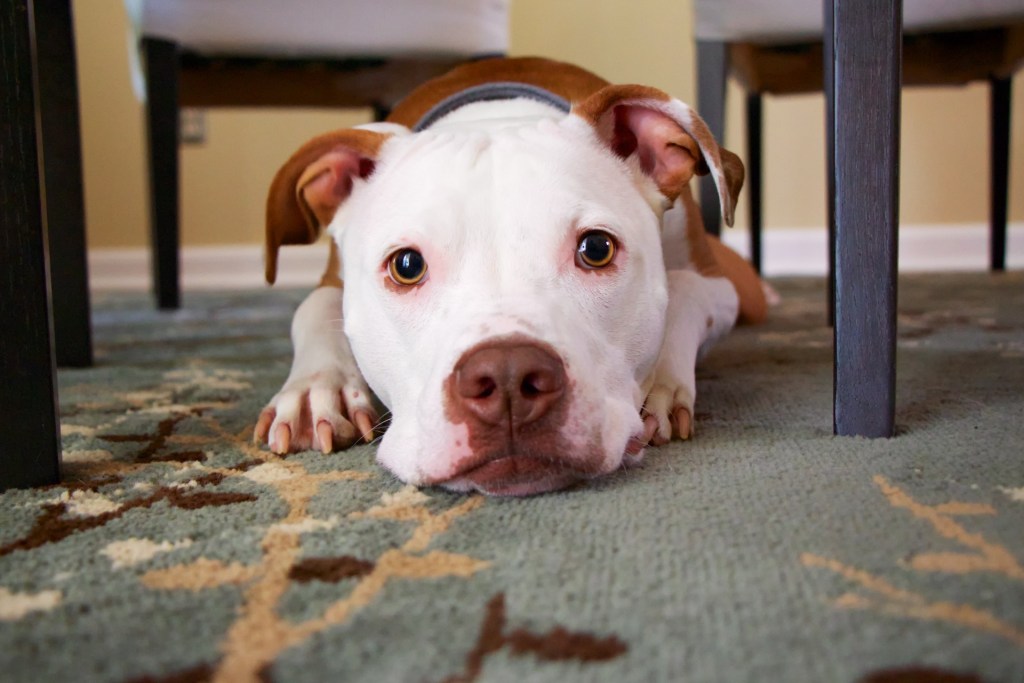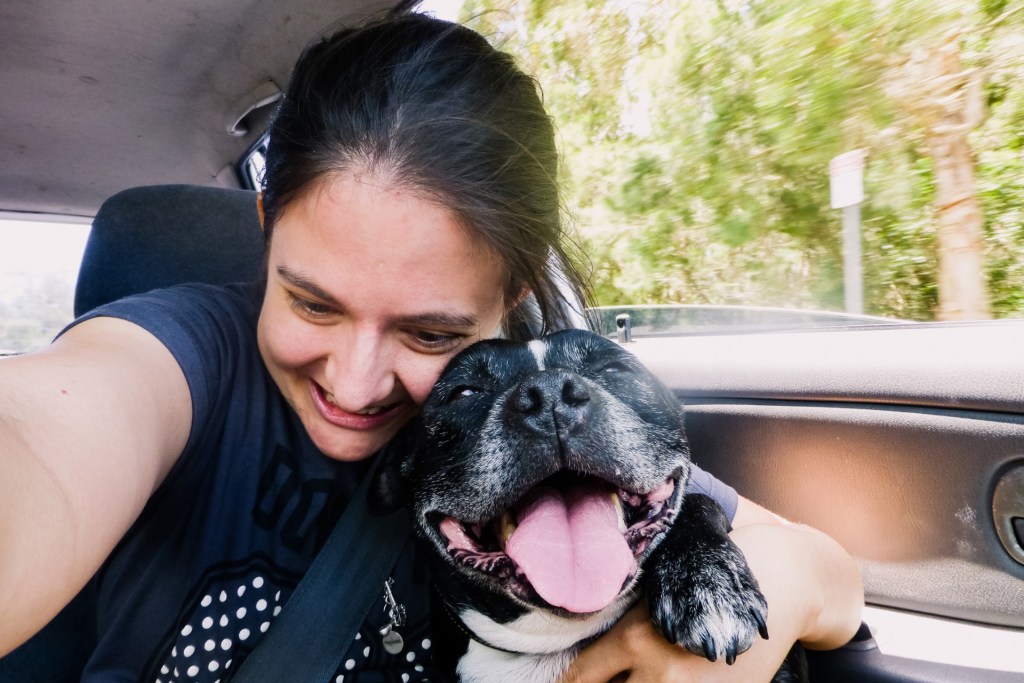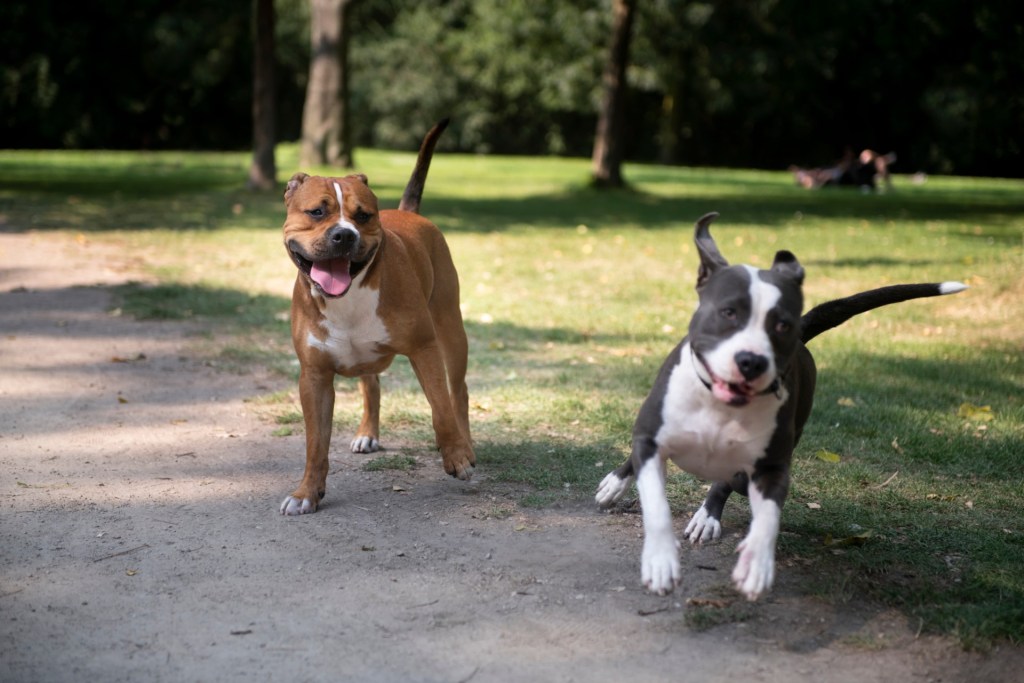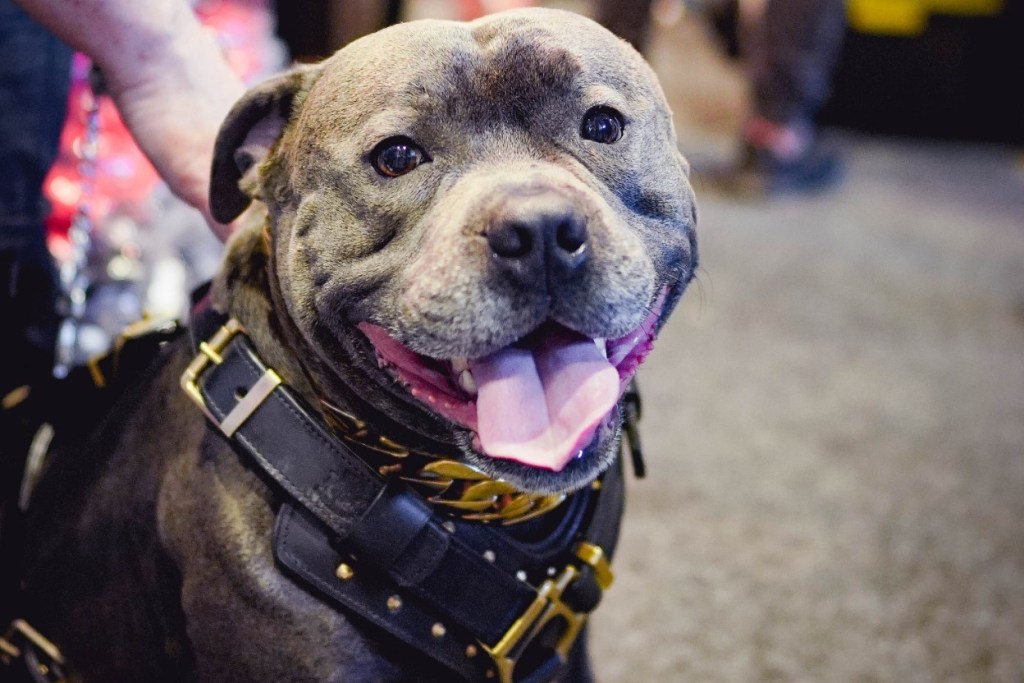Pit bulls sometimes have a bad reputation for being strong-willed. But, these lovable dogs are very smart, sweet, and family friendly when socialized and trained properly. pit bulls are super cute pups so it’s understandable why you’d want one in your life. However, it’s important to understand the best ways to train them since they can be stubborn. If you are looking to get a new pit bull puppy or have one already, there is never a wrong time to train them. It may be more difficult to change the habits of an older dog, but it’s definitely possible with a little dedication and positive reinforcement.

Socialization is a must
Whenever you get a new puppy, regardless of breed, it is always important to socialize them so they don’t fear other dogs or humans. Pit bulls will benefit greatly from socialization as puppies. Pet stores will sometimes hold puppy socialization events where you can bring your pet so he or she can run around and meet other puppies and people. If you can’t find a socialization event near you, then take your puppy to a busy park. Strangers will definitely have no argument against you asking them to pet your adorable puppy.
If your pit bull is 1 year or older, socialization may take a little more work, but it definitely isn’t impossible. Many pit bulls are friendly and sociable but if your pit is not, then it is a behavior that should be fixed. Have your pit bull meet close friends and family and their dogs to begin the socialization process.
Utilize positive reinforcement

When it comes to positive reinforcement, it is all about figuring out what motivates your dog the most. It could be food, their favorite toy, praise, or nearly anything else. Once you figure out what motivates your dog, you should know what you want to train them to do. You can start with basic commands like “sit,” “stay,” “come,” and “down.” Once you’ve mastered those, you can move on to more intricate commands and tricks like “leave it” or “spin.”
Positive reinforcement should be used throughout every training activity and should only be given as a result of good behavior. Never reward your dog for wrong behavior or for doing nothing since it will send a mixed message.
Take a class
If you are overwhelmed by the idea of training and have no idea where to start, then taking a class is a great option. There is basic training for your puppy or more advanced and intense training for your older dog. You can go to classes with your dog and make it a fun bonding experience. A training class will be a huge benefit as it will help your dog socialize with other dogs but also help work on their focus in distracting environments.
Exercise to the max

When you think of training, you may not think of exercising with your dog, but it can be an important part of the training process. Pit bulls are very active and energetic animals and need to be exercised regularly. You can combine training time with exercise for an efficient and effective training session.
Some ideas to get started are to train your dog on fetch and come commands while playing fetch. You can have them practice staying next to you as you throw the ball and release them to fetch it when you say. This will strengthen their restraint and patience.
Another option is to go for a short run with your pit bull. Running with your dog allows you to practice proper leash behavior while also tiring out your energetic pup.
Leash training for relaxing walks

Every dog should be trained to walk properly on a leash. There should be no pulling and they should never walk in front of you. When it comes to leash training it is important to have the right collar and leash. Your pet should respond well to the ones you choose and they should fit your pet comfortably.
Crate training
Another puppy-related tactic is crate training. Pit bull puppies can learn how to be house trained easily with a crate. Your puppy may not love being locked into a crate overnight, but they will get used to it after one or two nights and it will become a place they love. Crates are great for puppies because they teach them that separation from you is OK.
Crates are also great for keeping your puppy out of trouble when you leave the house. It will keep them safe, secure, and comfy while you’re at work or out running errands.
Pit bulls make great family pets. They are energetic, fun, and completely lovable. Some pit bulls just need a little extra love and attention when it comes to training. Luckily, training your dog isn’t as hard as you may think. It just takes some patience and dedication. If you give your pit bull the time, the love, and the dedication, they will give it all back to you and become one of the best well-trained dogs you’ve seen.
Editors' Recommendations
- 5 surefire ways to keep your dog off your bed and get a good night’s sleep
- Video: This family dog is the world’s best babysitter
- Funny dog video: Pup has an adorable reaction to a superhero pet on TV
- Science says dogs cry tears of happiness when reunited with their humans
- Video: Dog befriends bike thief (or why golden retrievers shouldn’t be guard dogs)


